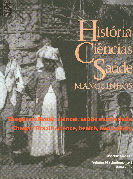May 2016
The anti-leprosy campaign in Colombia: the rhetoric of hygiene and science, 1920-1940, written by Diana Obregón – Universidad Nacional de Colombia and published in HCS-Manguinhos in 2003 discusses the replacement of the segregation approach.
Since the 1920s, the medical community realized that the strategy of leprosy control based on segregation and persecution of patients was inefficient and expensive. In the 1930s, Colombian new liberal government incorporated leprosy within the general sanitary institutions, by merging the Bureau of Lazarettos and the National Department of Hygiene.
The disease-apart approach started to be replaced by a more general public health strategy, which involved controlling other illnesses. Prevention and research played a more influential role, and the new sanitary officials saw leprosy in the light of the economic rationality of expenditures, placing more emphasis on therapies and making them mandatory for all patients. Improvements in leprosy treatment became widely known and available. However, the image of leprosy as a special condition and the practice of segregation were deeply entrenched within the Colombian culture and institutions. The rhetoric changed, but to break with several decades of persecution was a difficult task.
More on leprosy in Latin America in HCS-Manguinhos:
Cueto, Marcos and Puente, José Carlos de la. Vida de leprosa:the testimony of a woman living with Hansen’s disease in the Peruvian Amazon, 1947. Hist. cienc. saude-Manguinhos, 2003, vol.10, suppl.1, p.337-360. ISSN 0104-5970
Maciel, Laurinda Rosa et al. Memories and history of Hansen’s disease in Brazil told by witnesses (1960-2000). Hist. cienc. saude-Manguinhos, 2003, vol.10, suppl.1, p.308-336. ISSN 0104-5970
Joseph, D. George. “Essentially Christian, eminently philanthropic”: The Mission to Lepers in British India. Hist. cienc. saude-Manguinhos, 2003, vol.10, suppl.1, p.247-275. ISSN 0104-5970
Pandya, Shubhada S. The First International Leprosy Conference, Berlin, 1897: the politics of segregation. Hist. cienc. saude-Manguinhos, 2003, vol.10, suppl.1, p.161-177. ISSN 0104-5970
Hunter Smith III, Thomas. A monument to Lazarus: the leprosy hospital of Rio de Janeiro. Hist. cienc. saude-Manguinhos, 2003, vol.10, suppl.1, p.143-160. ISSN 0104-5970
White, Cassandra. Carville and Curupaiti: experiences of confinement and community. Hist. cienc. saude-Manguinhos, 2003, vol.10, suppl.1, p.123-141. ISSN 0104-5970
Monteiro, Yara Nogueira. Prophylaxis and exclusion: compulsory isolation of Hansen’s disease patients in São Paulo. Hist. cienc. saude-Manguinhos, 2003, vol.10, suppl.1, p.95-121. ISSN 0104-5970
Benchimol, Jaime L. and Sá, Magali Romero. Adolpho Lutz and controversies over the transmission of leprosy by mosquitoes. Hist. cienc. saude-Manguinhos, 2003, vol.10, suppl.1, p.49-93. ISSN 0104-5970
Oliveira, Maria Leide Wand-del-Rey de et al. Social representation of Hansen’s disease thirty years after the term ‘leprosy’ was replaced in Brazil. Hist. cienc. saude-Manguinhos, 2003, vol.10, suppl.1, p.41-48. ISSN 0104-5970
Robertson, Jo. Leprosy and the elusive M. leprae: colonial and imperial medical exchanges in the nineteenth century. Hist. cienc. saude-Manguinhos, 2003, vol.10, suppl.1, p.13-40. ISSN 0104-5970










